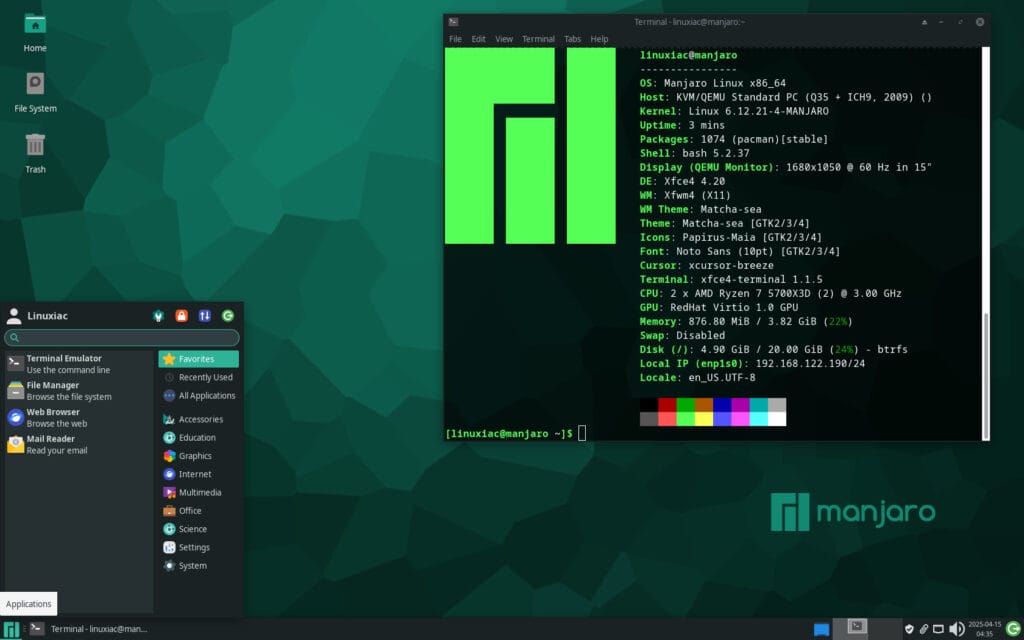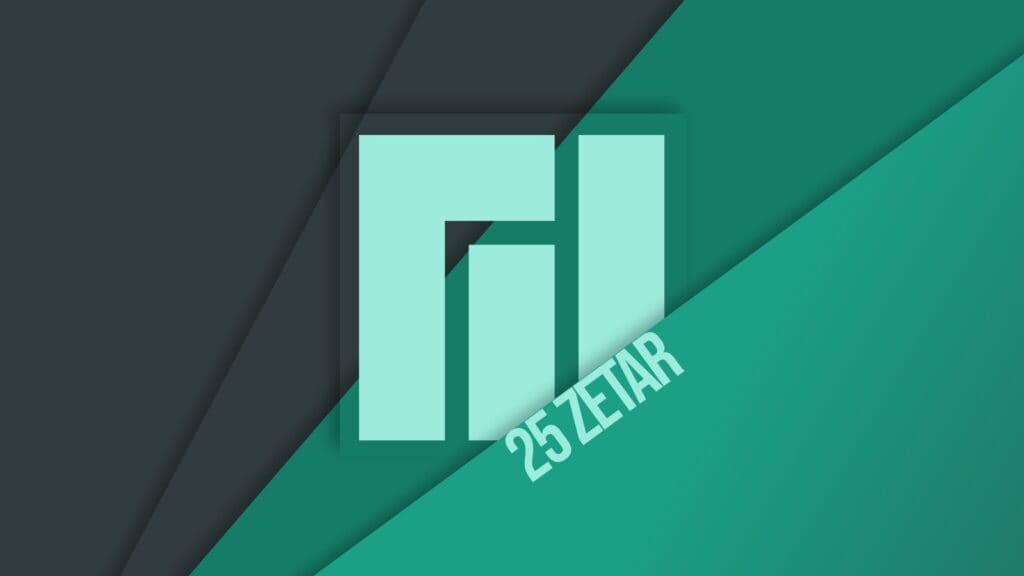Four months after its previous 24.2 “Yonada” version, the Manjaro team has unveiled the new 25 “Zetar” release, which includes fresh updates across the GNOME, Plasma, and Xfce desktop environments and improved kernel support.
Starting with the GNOME edition, users can expect the advantages of GNOME 48, which introduces notification stacking to consolidate messages from individual applications. The performance also sees a notable boost with dynamic triple buffering. As part of this upgrade, Mutter (GNOME’s display manager) more smoothly manages sudden surges in screen activity, cutting down on jerky animation and skipped frames.
Meanwhile, a new feature helps extend battery lifespan by allowing users to cap battery charging at 80%. Additionally, GNOME’s initial implementation of system-level HDR support lays the groundwork for more brilliant, high-dynamic-range visuals in applications already prepared to handle HDR content.
Manjaro 25 Xfce edition ships with the latest version, 4.20, of the desktop environment, introducing a handy file highlighting feature in Thunar, letting users emphasize vital files with custom backgrounds and text colors. Searching becomes more convenient, too, with recursive search functionality.

The revised panel settings allow for pixel-based length adjustments and the option to let maximized application windows slide behind the panel. Furthermore, Xfce’s Control Centre consolidates essential system modules into one place, streamlining the management of display settings, file context menus, and default multi-monitor behaviors.
On the KDE side, the Plasma edition now features the latest Plasma 6.3.4, Frameworks 6.12, and KDE Gear 24.12. Among its many enhancements, fractional scaling has been improved, and color accuracy has been bumped, ensuring more faithful tones when employing either ICC profiles or the Night Light feature.
Users can also expect smoother performance in System Monitor, which now offers more accurate CPU statistics while consuming fewer system resources. In keeping with Plasma’s tradition of customizability, panels can be cloned, and scripting allows for refined changes in appearance and behavior.
Under the hood, the distro is powered by Linux kernel 6.12. For those running older machines or preferring long-term support, kernels 6.6 LTS and 6.1 LTS are likewise offered.
It’s also worth noting that Manjaro Summit, the new Manjaro initiative for offering semi-immutable distribution, has entered its Alpha phase. Built around atomic updates using pre-made disk images, the distro offers a read-only root partition, rollback capabilities, and improved system consistency.
The current Alpha supports only the GNOME desktop, with KDE and XFCE variants available but untested. Key features include package layering, systemd-bless-boot support, and integration with container tools like Distrobox.
Refer to the release announcement for detailed information on all changes to the new Manjaro 25 “Zetar” release.
Being a rolling release distro, keeping Manjaro up-to-date is enough to always be at the latest version. So, to switch to Zetar, just execute the well-known pacman -Syu command.
For those who want to perform a fresh install, the installation ISO images are available from the download section on the project’s website.

I run Manjaro on my 20 years old laptop (inter core i7 8th generation). It works fine.I never had problems with this distro. If you come from Windows and want to get into Arch Linux, it’s the more friendly.